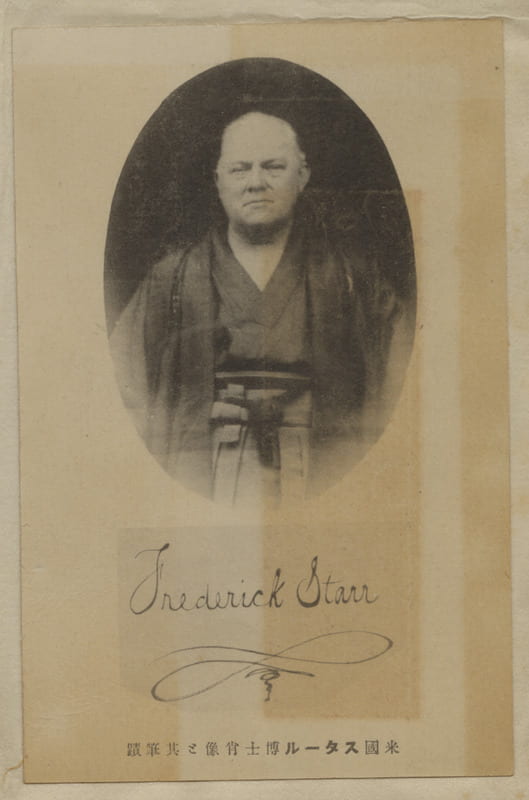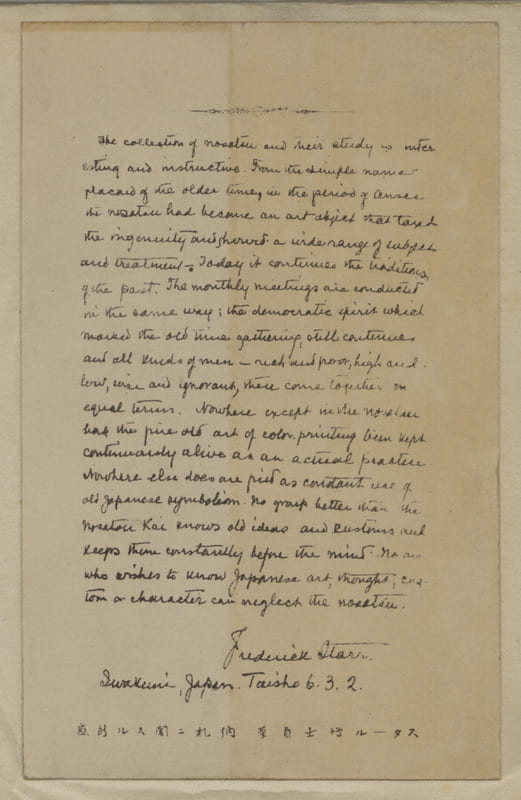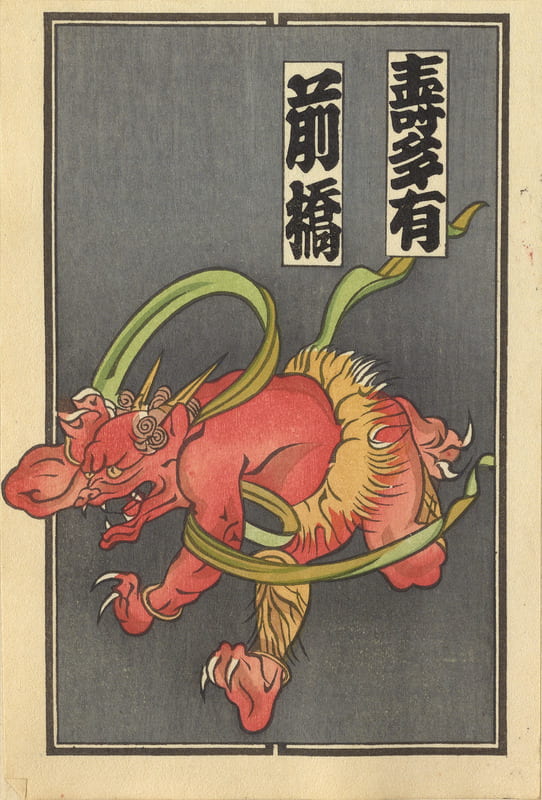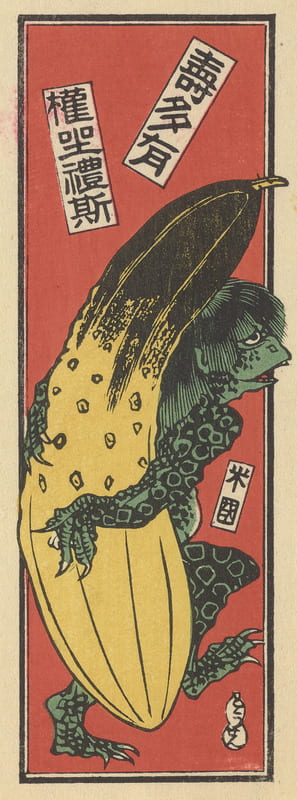The Starr collection
Frederick Starr (1858-1933) was an American anthropologist at the University of Chicago who visited Japan frequently between 1904 and 1933. His primary interest during his stays in Japan was the social networks of collectors who were focused on objects associated with the early modern era, particularly collectors of traditional toys and senjafuda. Starr, his traveling companion Manuel Gonzales, and his interpreter Maebashi Hanzan were prominent fixtures at numerous senjafuda exchange meetings in the early 20th century, and Starr became so associated with the senjafuda scene that the press gave him the nickname “Professor Votive Slip” (Ofuda hakushi). Starr also wrote a short book about the history of senjafuda that was published in English in 1917 as The Nosatsu Kai and in Japanese (in a translation and adaptation by Fujisato Kōko) as Nōsatsu shi in 1921.
Starr amassed a huge collection of senjafuda both through his frequent attendance at exchange meetings and by procuring scrapbooks put together by other collectors. As a result of his persistence in acquiring senjafuda his collection not only thoroughly documents the years he was active in senjafuda (the 1910s to early 1930s), but also contains examples going back to the mid-19th century. After his death, his senjafuda collection was acquired by Gertrude Bass Warner (1863-1951), a traveler and collector of Japanese, Chinese, and Korean art and founder of the University of Oregon Art Museum (now the Jordan Schnitzer Museum of Art). The senjafuda mounted in scrapbooks (more than 50 of them) are now housed in Special Collections and University Archives (University of Oregon Libraries), while the loose slips are housed in the Jordan Schnitzer Museum of Art.
Henry Smith has examined Starr’s scholarly interest in Japan in detail, noting Starr’s consistent attention to the religious dimension of culture—clearly visible in senjafuda, as this exhibition shows. Smith also notes that Starr’s interest in “the social matrices in which these objects came to be collected, depicted, and exchanged in…distinctive subcultures of modern Japan” gives his work value in a contemporary context as well.[1] But Starr had an eye for phenomena that appealed to a playful as well as a scholarly bent. When asked by a reporter for a Japanese newspaper what his interests were, he reeled off a list that began with kappa and tengu.[2] It’s no wonder, then, that yōkai are well represented in his senjafuda collection.
References
[1] Henry D. Smith II, “Folk Toys and Votive Placards: Frederick Starr and the Ethnography of Collector Networks in Taisho Japan,” from “Popular Imagery as Cultural Heritage: Aesthetical and Art Historical Studies of Visual Culture in Modern Japan,” Final Report, Grant-in-Aid for Scientific Research #20320020 (PI: KANEDA Chiaki), March 2012. (Page 11)
[2] Undated newspaper clipping (ca. 1911) found in Collection of the Japanese colorprinted placards and greeting cards, called Nōsatsu or Senjafuda, volume 10 (folio 12 recto), Special Collections and University Archives, University of Oregon Libraries, Eugene, Oregon.



